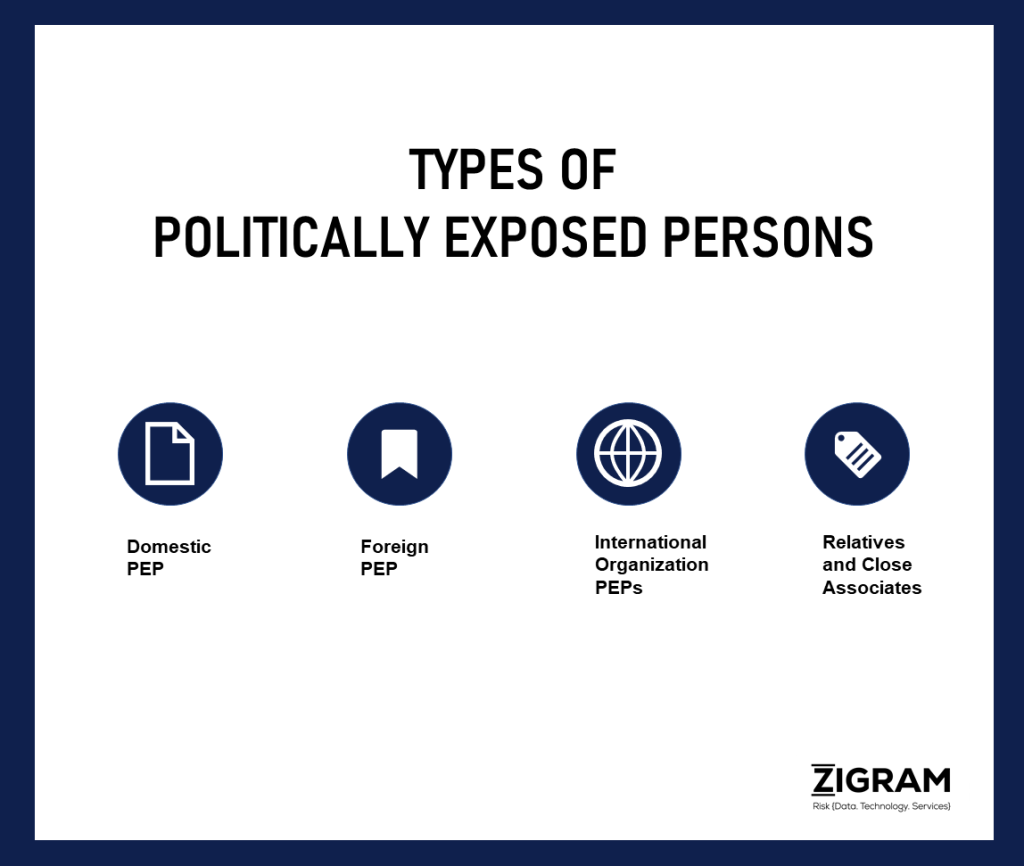- 7 minutes read
Best Practices For PEP Screening
Robust compliance measures are becoming essential in the dynamic world of global finance. Screening politically exposed persons (PEPs) is a critical component of compliance. Financial institutions use PEP screening as an essential tool to identify and reduce the risks associated with people in high-profile public roles. Financial institutions and compliance specialists can find a thorough guide to PEP screening best practices in this article.

Politically exposed persons (PEPs) are individuals who hold or have held prominent public positions or functions, both domestically and internationally. These positions may include government officials, heads of state, military leaders, and high-ranking executives in state-owned enterprises. Due to their influence and access to public funds, PEPs are considered high-risk individuals for potential involvement in corruption, money laundering, or other illicit activities.
The risks associated with PEPs necessitate thorough screening processes to ensure that financial institutions are not unwittingly facilitating illicit financial transactions. Failure to identify and address these risks can result in severe legal and reputational consequences for financial institutions.
Politically Exposed Persons (PEPs) are pivotal in the context of screening due to the elevated risks associated with their positions. PEPs, holding influential public roles, are susceptible to corruption, unwittingly facilitating illegal activities and adhering to international regulatory standards bribery, and money laundering. Screening for PEPs is imperative to safeguard financial institutions.
Financial transactions involving PEPs pose significant reputational risks for institutions. Identifying and scrutinizing PEPs helps prevent association with individuals involved in illicit activities, preserving the institution’s integrity and customer trust. Furthermore, PEP screening aligns with Enhanced Due Diligence (EDD) requirements, ensuring compliance with stringent regulatory measures.
From a global perspective, PEP screening contributes to the collective effort against financial crime and terrorist financing. It promotes transparency, accountability, and adherence to Know Your Customer (KYC) regulations. Neglecting PEP screening can result in severe regulatory fines, penalties, and legal consequences. In essence, PEP screening is not just a regulatory obligation; it is a strategic imperative for financial institutions to fortify themselves against multifaceted risks and uphold the stability and credibility of the financial system. Understanding PEPs and the Risks.

Best Practices For PEP Screening
1. Implement A Risk-Based Approach:
Financial institutions should adopt a risk-based approach to PEP screening. Not all PEPs pose the same level of risk, and a one-size-fits-all approach may not be effective. Develop a risk matrix that considers factors such as the PEP's position, jurisdiction, and the nature of the financial relationship. Allocate resources and screening intensity based on the assessed risk level.
2. Regularly Update PEP Databases:
PEP databases are dynamic, and individuals' political statuses can change rapidly. Financial institutions must ensure that their PEP databases are regularly updated to reflect changes in political positions and affiliations. Utilize reputable and up-to-date PEP databases to enhance the accuracy of screening results.
3. Integration Of Data Sources:
Optimize the screening process by integrating multiple data sources. Beyond PEP databases, consider incorporating information from media sources, government publications, and international watchlists. A comprehensive approach to data integration enhances the likelihood of identifying PEPs accurately.
4. Utilize Technology And Automation:
Leverage advanced technologies and automation tools to streamline the PEP screening process. Implementing robust screening software can enhance efficiency, reduce the risk of human error, and ensure compliance with regulatory requirements. Regularly update and maintain these systems to stay ahead of emerging risks.
5. Customer Due Diligence (CDD) And Enhanced Due Diligence (EDD):
Integrate PEP screening seamlessly into customer due diligence processes. Implement enhanced due diligence measures for high-risk customers, including PEPs. This may involve more frequent monitoring, additional documentation requirements, and closer scrutiny of transactions involving PEPs.
6. Training And Awareness:
Ensure that staff members involved in compliance and screening processes receive regular training on PEP-related risks and the importance of adherence to screening protocols. Foster a culture of compliance within the organization to promote awareness and vigilance among employees.
7. Escalation Protocols:
Establish clear escalation protocols for identified PEP matches. Define procedures for investigating potential hits, reporting to relevant authorities, and deciding whether to continue or terminate the business relationship. Having well-defined escalation protocols ensures a consistent and effective response to PEP-related risks.
8. Collaboration With Regulatory Authorities:
Foster strong relationships with regulatory authorities and stay informed about updates to PEP-related regulations. Collaboration with regulatory bodies enhances the financial institution's ability to adapt to evolving compliance requirements and may provide additional resources for staying ahead of emerging risks.
9. Continuous Monitoring:
Implement continuous monitoring of customer transactions, especially for PEPs and high-risk entities. Automated monitoring systems can help identify suspicious patterns of activity and trigger further investigation. Regularly reassess the risk profile of existing customers, particularly those with PEP status.
10. Regular Audits And Reviews:
Conduct regular internal audits and reviews of the PEP screening process. Assess the effectiveness of current procedures, identify areas for improvement, and ensure ongoing compliance with regulatory requirements. Periodic reviews also provide an opportunity to update policies based on lessons learned and emerging best practices.
In a financial landscape marked by increased scrutiny and regulatory complexity, effective PEP screening is indispensable for mitigating risks associated with money laundering, corruption, and other financial crimes. Financial institutions and compliance professionals must stay vigilant, adopting a dynamic and risk-based approach to PEP screening.
By integrating advanced technologies, leveraging comprehensive data sources, and fostering a culture of compliance, financial institutions can not only meet regulatory requirements but also safeguard their reputation and financial integrity. The implementation of best practices for PEP screening is not just a regulatory necessity; it is a strategic imperative in today’s interconnected and high-stakes financial environment.
- #PEPScreening
- #PEP
- #Compliance
- #DueDiligence






